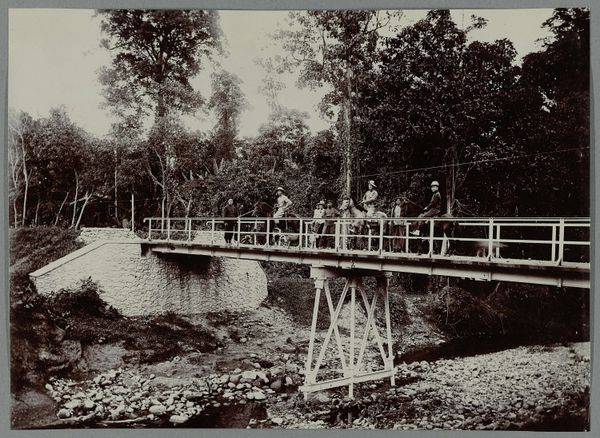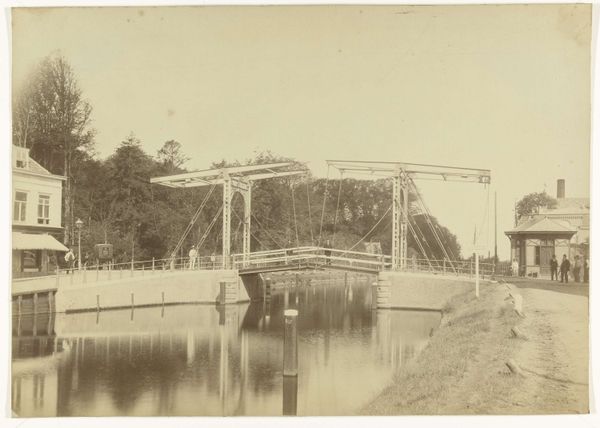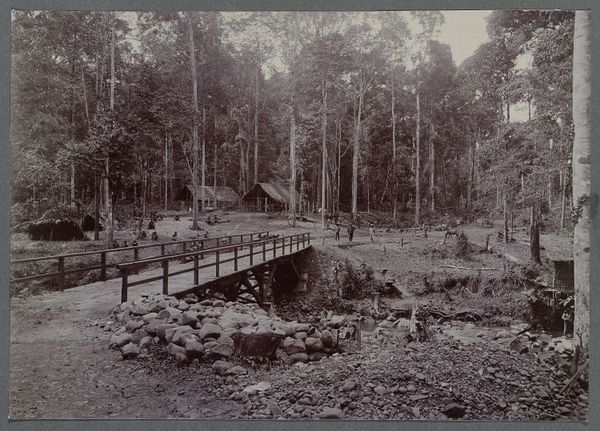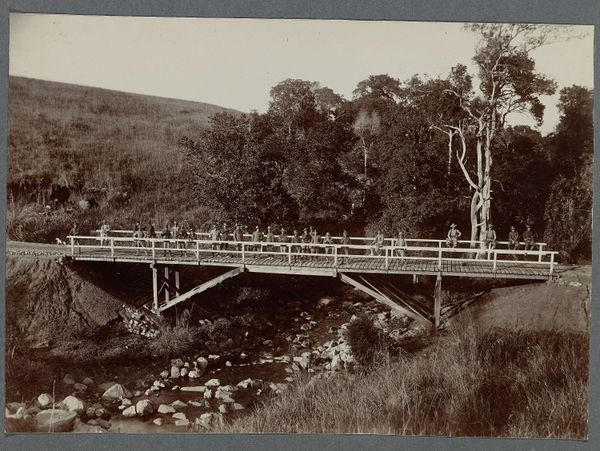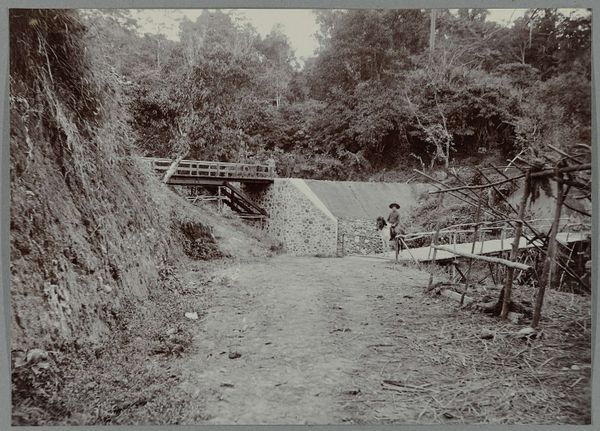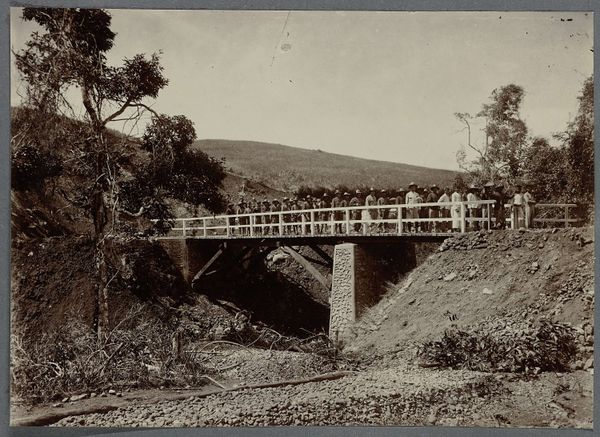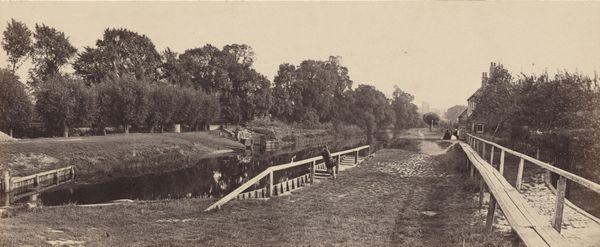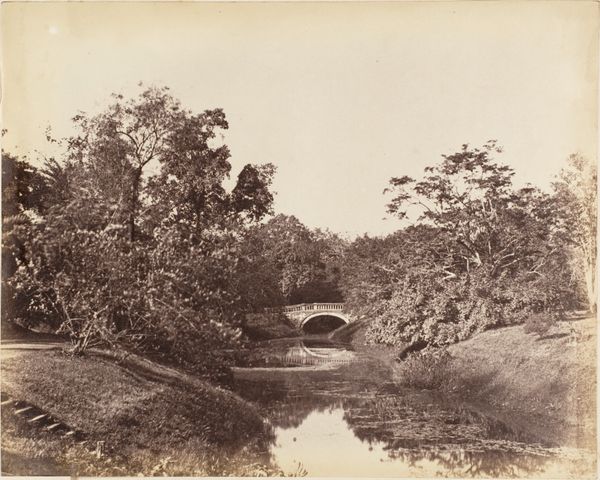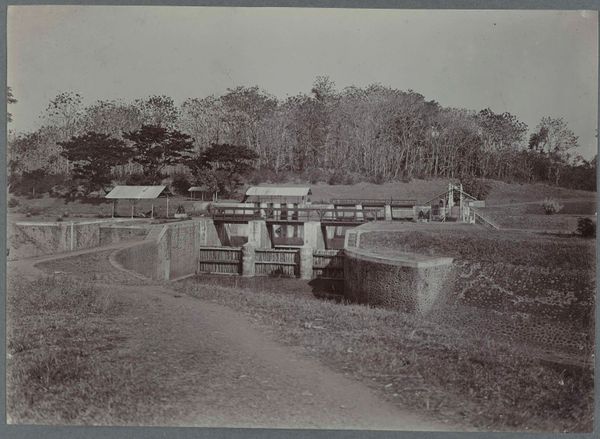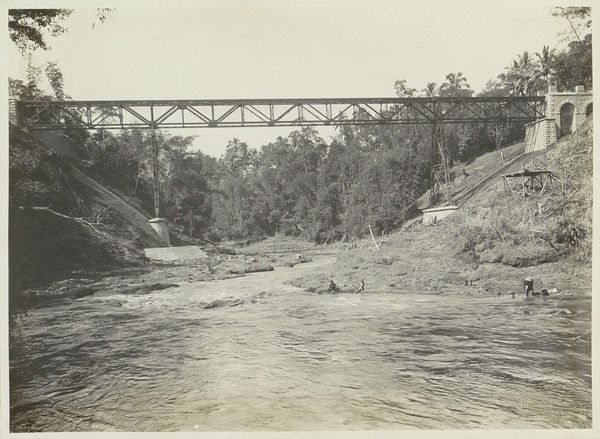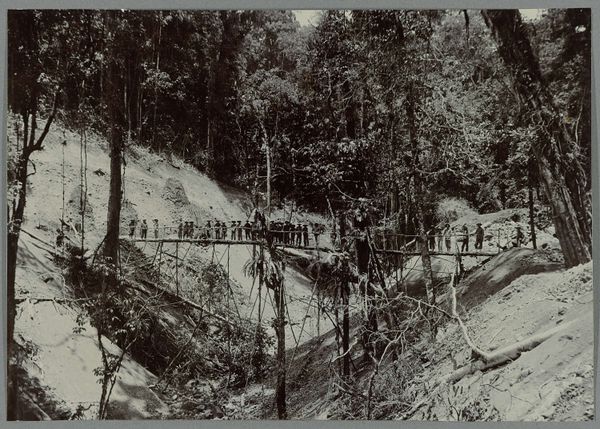
photography
#
landscape
#
photography
#
mixed media
#
realism
Dimensions: height 138 mm, width 200 mm
Copyright: Rijks Museum: Open Domain
Curator: I’m immediately drawn to the quiet stillness in this photograph, almost like a stage set for a drama we’ll never see. There’s an underlying tension too. Editor: Indeed. What we’re looking at is titled, "Brug over de rivier Alue Teungoh," a photograph taken sometime between 1903 and 1913. It depicts a bridge over the Alue Teungoh River. It’s attributed to an anonymous artist, but obviously captures a fascinating moment in time. Curator: A small bridge teeming with men. Given the era, the men in the image suggest something military, perhaps colonial, but I would suggest it is perhaps more functional. The landscape feels somehow claimed, with nature tamed or re-purposed to a pragmatic intent. Editor: Exactly, their presence hints at broader historical forces at play. Photography from this period in locations like this—presumably somewhere in the Dutch East Indies, modern-day Indonesia—almost inevitably speak to colonial administration, resource extraction and exerting military presence. Bridges of course serve literally as linkages, connections and dominance, and are powerful symbols, representing societal control. Curator: I agree and the choice of black and white in capturing the medium adds to a feeling of somberness; it feels quite distant. Is there also perhaps a degree of romanticism at play? The distant forest is quite inviting, almost acting as a foil to the rigid bridge. It gives the men crossing it, an element of frontierism. Editor: That contrast you note is palpable. While technically "Realism," the photo also showcases that tension between constructed infrastructure and the surrounding untamed wilderness, which was frequently explored and exploited during the period. Bridges were symbols of "progress," but progress frequently for whom, and at what cost. Curator: An interesting point. The bridge could act as a visual metaphor for colonial reach and ambition, as we can still feel those consequences today. The symbolism gives this piece such a powerful, lasting voice, making it relevant. Editor: Precisely. Analyzing it today allows a space to contemplate the complexities of colonial legacies. Curator: I agree completely.
Comments
No comments
Be the first to comment and join the conversation on the ultimate creative platform.

